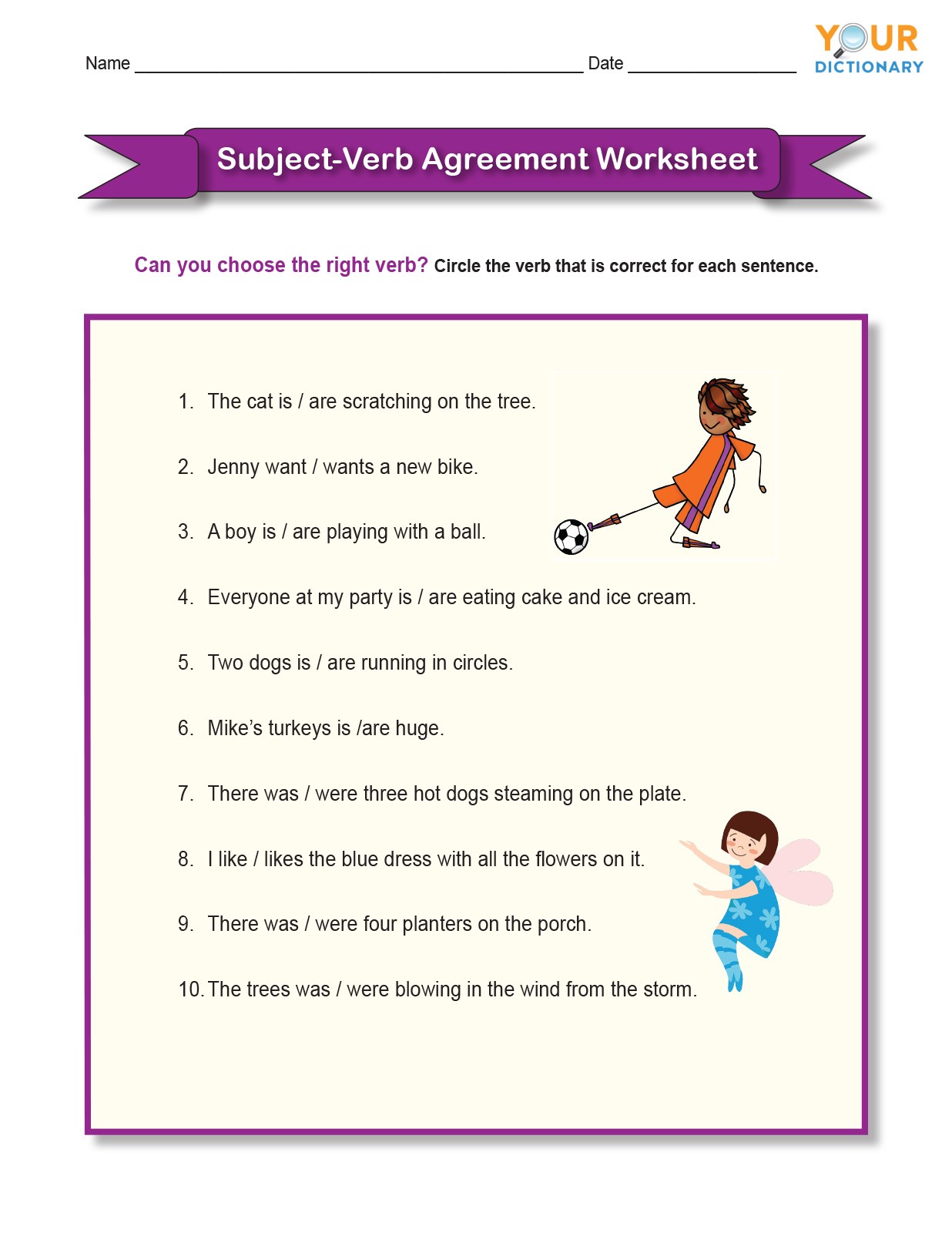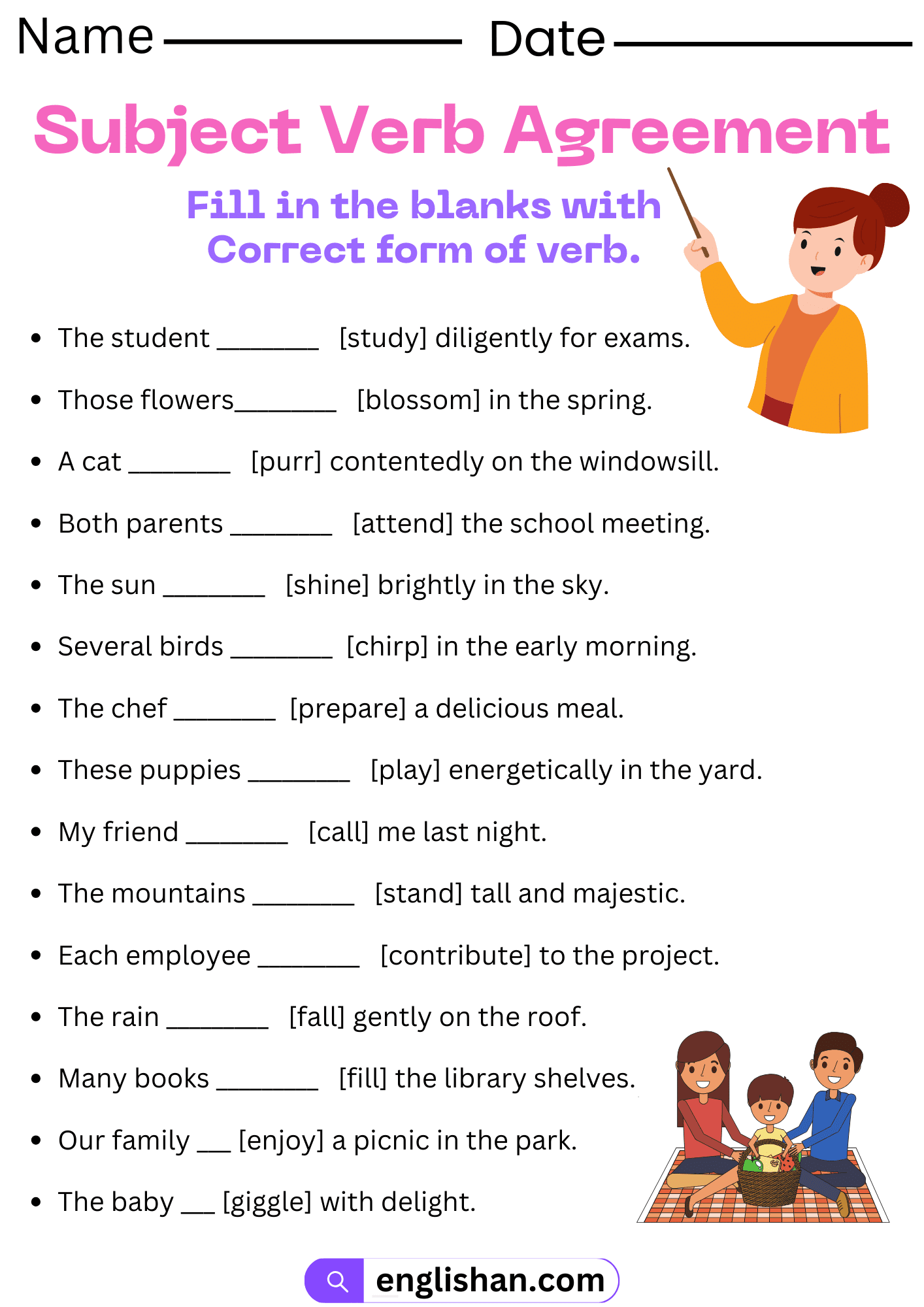
Mastering Grammar: The Indispensable Role of Subject-Verb Agreement Worksheets
In the intricate tapestry of the English language, clarity and precision are paramount. One of the foundational threads that weaves this tapestry together is subject-verb agreement. It’s a grammatical principle that dictates that the verb in a sentence must agree in number with its subject. A singular subject requires a singular verb, and a plural subject demands a plural verb. While seemingly straightforward, this rule presents myriad nuances that can trip up even experienced writers and speakers. This is where the invaluable resource of Subject-verb agreement worksheets comes into play.
These specialized educational tools are not merely drills; they are structured pathways to mastery, offering targeted practice that solidifies understanding and builds confidence. This comprehensive article will delve into the critical importance of subject-verb agreement, explore the multifaceted benefits of using Subject-verb agreement worksheets, examine the various types available, and provide guidance on how to maximize their effectiveness for lasting grammatical proficiency.
The Cornerstone of Coherent Communication: Understanding Subject-Verb Agreement

At its core, subject-verb agreement ensures that sentences are grammatically sound and easy to understand. Imagine a sentence like "The students studies hard." Immediately, an English speaker registers a discord. The plural subject "students" clashes with the singular verb "studies." The correct form, "The students study hard," flows naturally because the verb "study" correctly agrees with the plural subject.
The basic rule is simple:
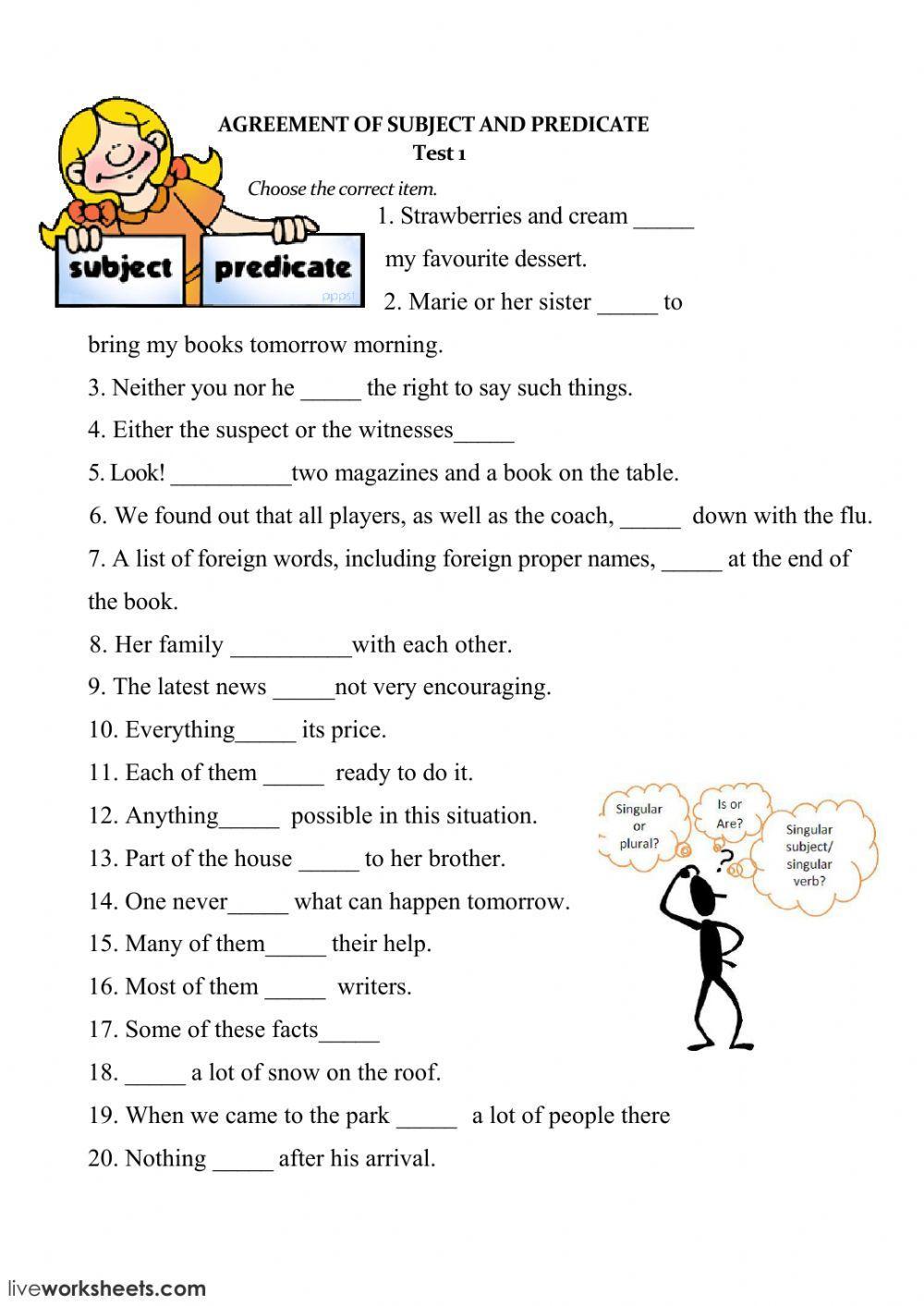
- Singular Subject + Singular Verb: The cat sleeps. (Cat = singular, sleeps = singular)
- Plural Subject + Plural Verb: The cats sleep. (Cats = plural, sleep = plural)
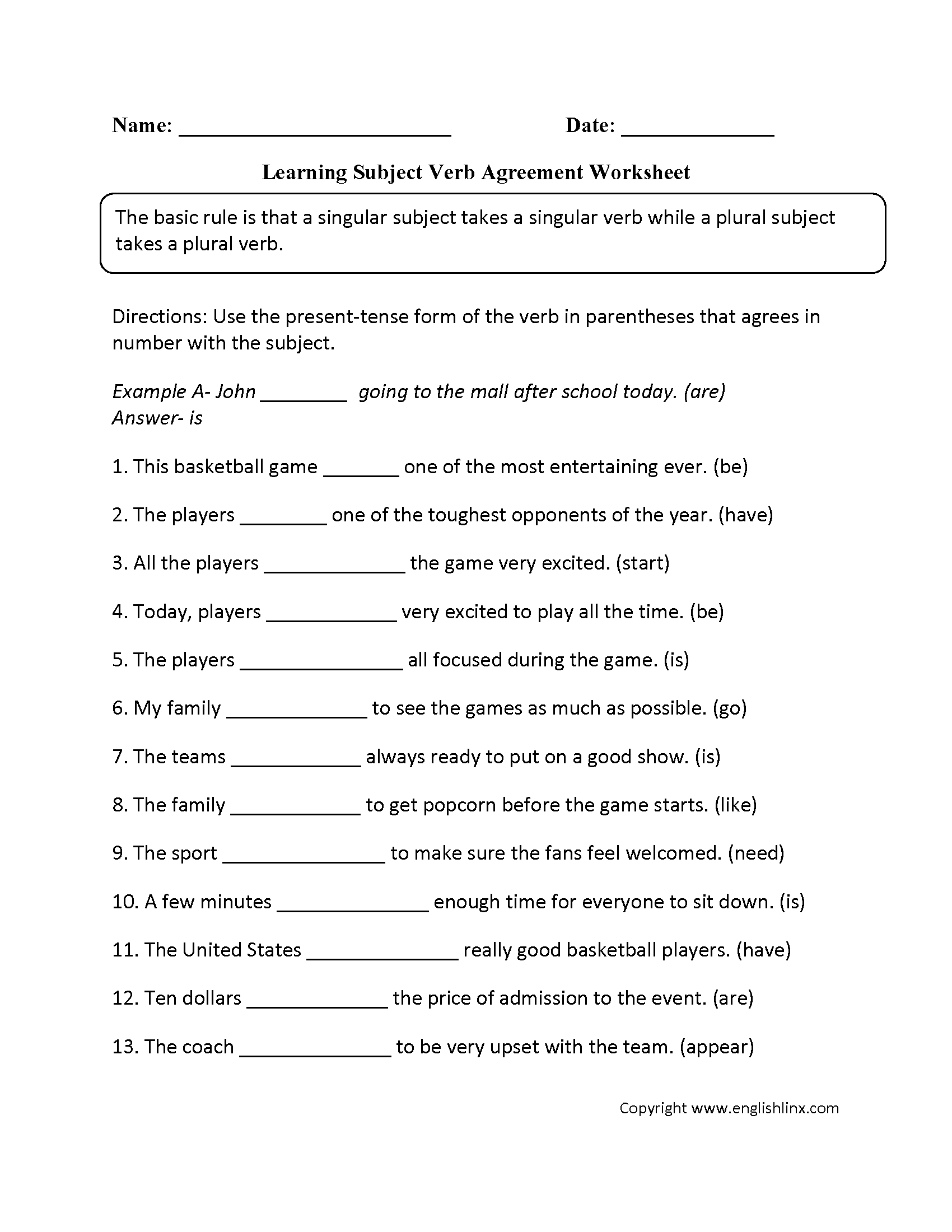
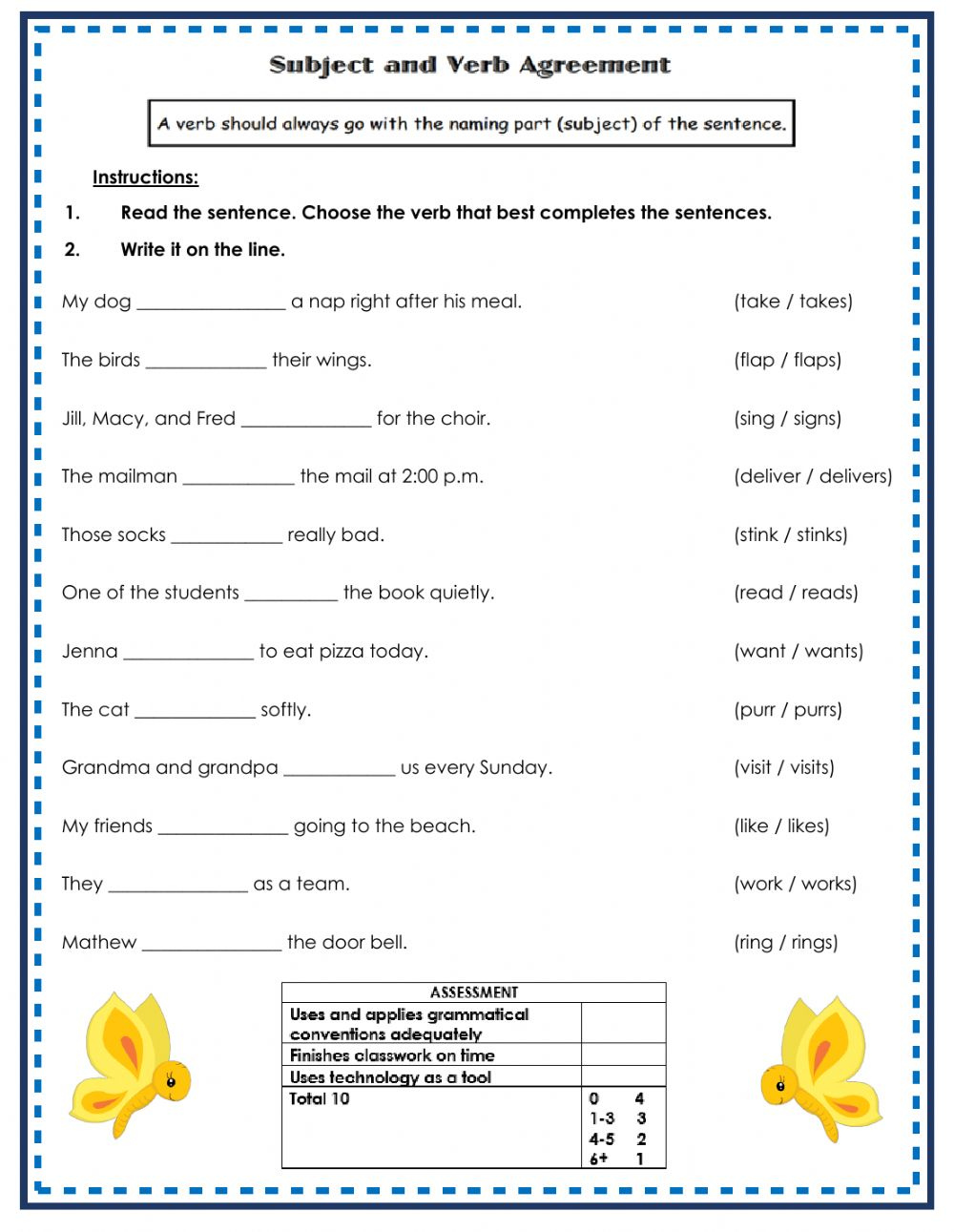
However, the complexities arise with:
- Intervening Phrases: Words or phrases that come between the subject and the verb (e.g., "The box of chocolates is missing.").
- Indefinite Pronouns: Some are always singular (e.g., each, every, nobody, something), others are always plural (e.g., both, few, many), and some can be singular or plural depending on context (e.g., all, any, none, some).
- Collective Nouns: Nouns that represent a group (e.g., team, family, committee), which can be singular or plural depending on whether the group acts as a single unit or as individual members.
- Compound Subjects: Subjects joined by "and," "or," "nor," "either/or," or "neither/nor."
- Inverted Sentences: Sentences where the verb comes before the subject (e.g., "There are many reasons.").
- Relative Pronouns: Pronouns like "who," "which," and "that," where the verb agrees with the antecedent of the pronoun.
- Special Cases: Nouns that look plural but are singular (e.g., news, mathematics) or nouns that look singular but are plural (e.g., scissors, pants).
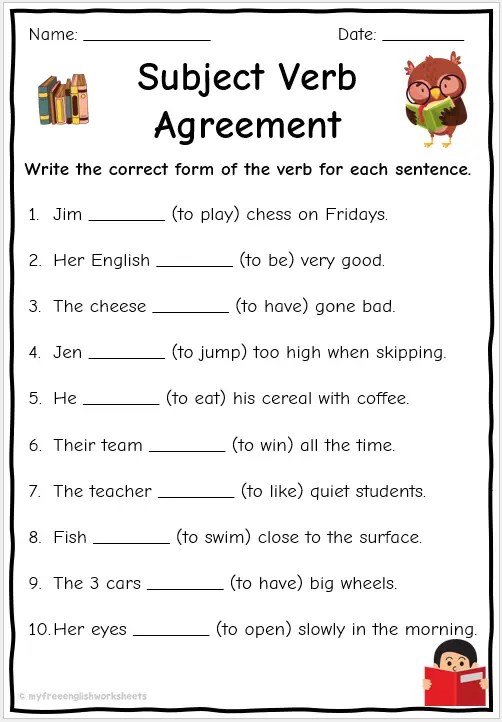
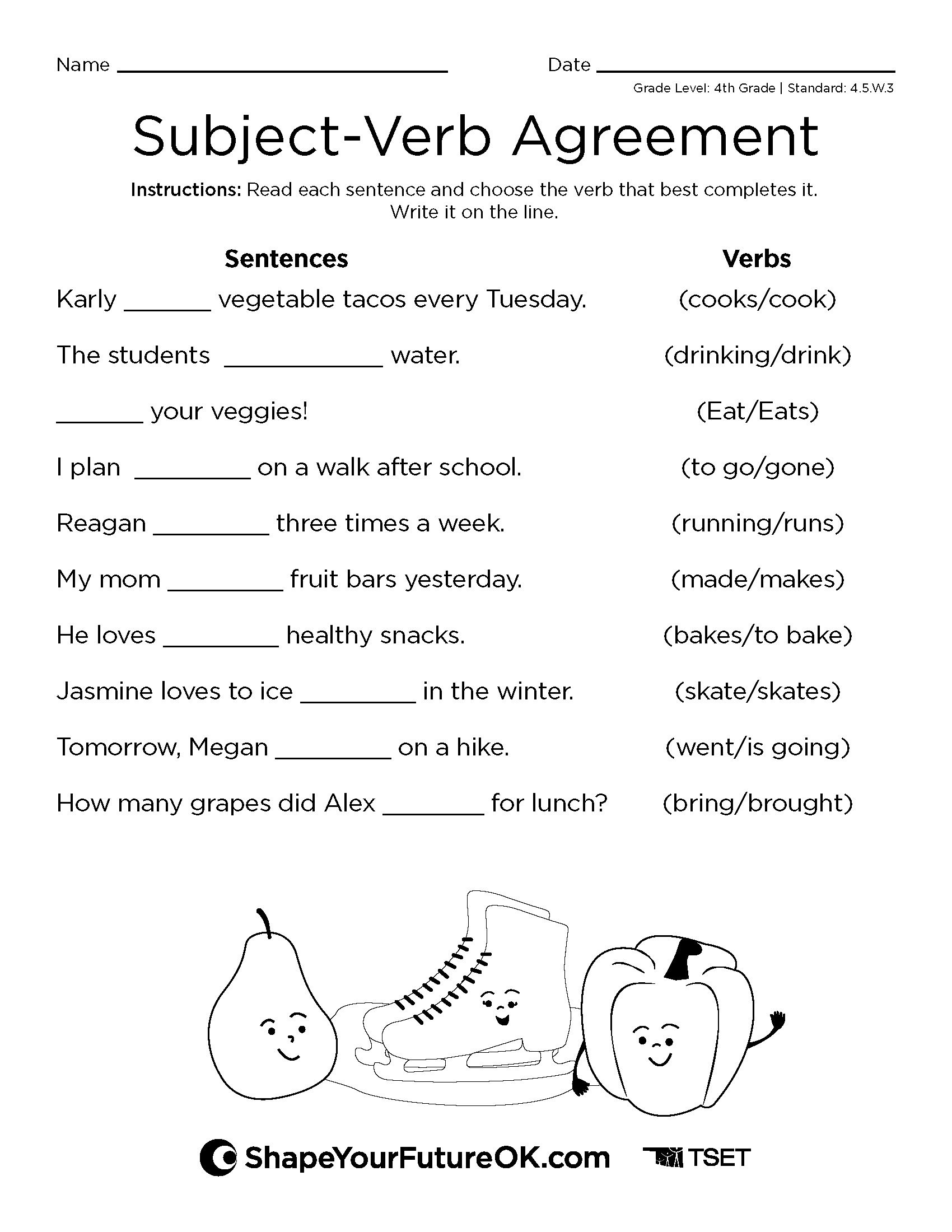

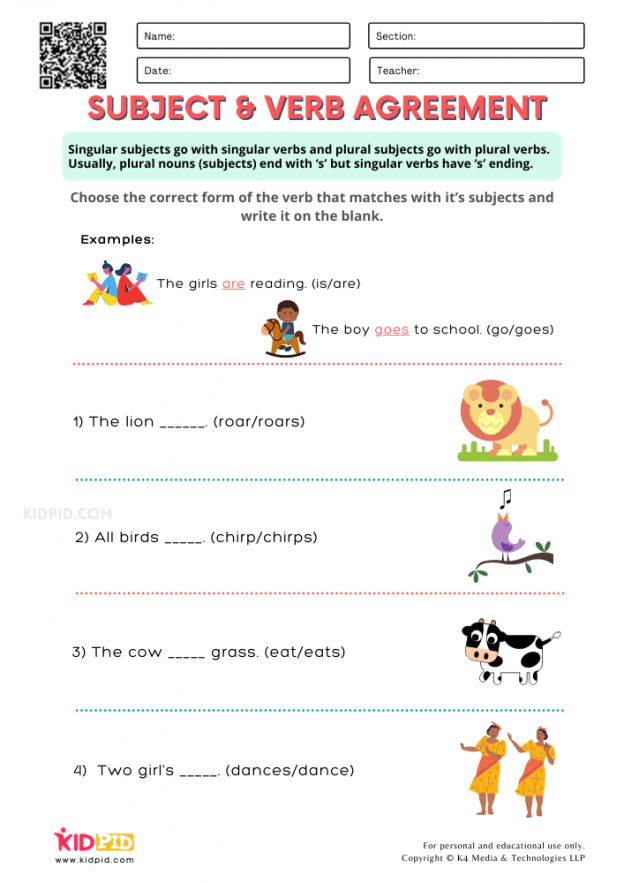
Missteps in subject-verb agreement can lead to awkward phrasing, misinterpretation, and a general lack of professionalism in both written and spoken communication. It’s a fundamental skill that underpins clarity, credibility, and effective expression.
Why Subject-Verb Agreement Matters and How Worksheets Bridge the Gap
The significance of mastering subject-verb agreement extends far beyond achieving a good grade in a grammar class. In academic writing, flawless grammar enhances the credibility of your arguments and ensures your ideas are conveyed precisely. In professional contexts, whether it’s an email, a report, or a presentation, grammatical errors can undermine your authority and create an impression of carelessness. For non-native English speakers, mastering this concept is a crucial step towards fluency and confidence in using the language effectively.
While understanding the rules theoretically is a start, true mastery comes through consistent practice. This is where Subject-verb agreement worksheets prove to be indispensable. They offer a structured, repetitive, and often immediate-feedback environment that passive reading of grammar rules cannot replicate.
Here’s how worksheets bridge the gap between understanding and application:
- Active Learning: Worksheets require learners to actively engage with the material, applying rules rather than just memorizing them. This active recall strengthens neural pathways and improves retention.
- Targeted Practice: Good worksheets focus specifically on different aspects of subject-verb agreement, allowing learners to concentrate on areas where they struggle most, whether it’s indefinite pronouns or collective nouns.
- Repetition for Reinforcement: Grammar rules, like any skill, require repetition to become second nature. Worksheets provide ample opportunities for this vital practice.
- Immediate Feedback: Many worksheets come with answer keys, allowing learners to check their work immediately. This instant feedback loop is crucial for identifying errors, understanding why they are errors, and correcting misconceptions on the spot.
- Self-Paced Learning: Learners can work through worksheets at their own pace, reviewing concepts as needed and spending more time on challenging areas without the pressure of a classroom setting.
- Building Confidence: Successfully completing exercises on a worksheet builds confidence, motivating learners to tackle more complex grammatical challenges.
Deconstructing Subject-Verb Agreement Worksheets: Types and Structures
The design and complexity of Subject-verb agreement worksheets vary widely, catering to different learning styles and proficiency levels. Understanding these types can help educators and learners choose the most effective tools.
- Basic Fill-in-the-Blanks: These are often the starting point for beginners. Sentences will have a blank space where the correct verb form needs to be inserted.
- Example: The dog ____ (bark/barks) loudly.
- Multiple Choice: Learners select the correct verb form from a given set of options. This format can be helpful for identifying the correct answer even if the underlying rule isn’t fully internalized yet, but it also reinforces recognition.
- Example: Neither John nor Mary (is/are) coming to the party.
- Error Identification/Correction: More advanced worksheets present sentences or short paragraphs containing subject-verb agreement errors. Learners must identify the error and then correct it. This type requires a deeper understanding of the rules.
- Example: The committee were divided on the issue. (Correction: The committee was divided… if acting as a unit).
- Sentence Rewriting/Combination: Learners are given sentences and asked to rewrite them, ensuring correct subject-verb agreement, especially when combining clauses or dealing with complex structures.
- Paragraph-Level Exercises: These exercises provide a longer passage of text where learners must ensure subject-verb agreement throughout. This helps learners see the rules in a more natural, contextualized setting, preparing them for real-world writing.
- Interactive Online Worksheets/Quizzes: Many websites and educational platforms offer digital, interactive subject-verb agreement exercises. These often provide instant feedback, track progress, and sometimes offer explanations for incorrect answers, making them highly engaging for digital-native learners.
- Themed Worksheets: Some worksheets integrate subject-verb agreement practice with specific themes (e.g., science, history, current events), making the learning more engaging and relevant to other subjects.
The best worksheets will often combine several of these types, gradually increasing in difficulty to provide a comprehensive learning experience.
Key Elements of Effective Subject-Verb Agreement Worksheets
Not all worksheets are created equal. An effective Subject-verb agreement worksheet should possess several key characteristics to maximize its learning potential:
- Clear Instructions: Ambiguous instructions can lead to frustration and hinder learning. The worksheet should clearly state what the learner needs to do.
- Variety of Exercise Types: As discussed above, a mix of fill-in-the-blanks, multiple choice, error identification, and contextual exercises keeps the learner engaged and tests understanding from different angles.
- Gradual Increase in Difficulty: Worksheets should ideally progress from simple, straightforward examples to more complex scenarios involving tricky cases like indefinite pronouns, collective nouns, inverted sentences, and intervening phrases.
- Simple: "She (run/runs) fast."
- Intermediate: "Every one of the students (is/are) ready for the test."
- Advanced: "Neither the coach nor the players (was/were) happy with the outcome."
- Focus on Common Pitfalls: High-quality worksheets will specifically target the most common subject-verb agreement errors, providing ample practice for these challenging areas. This includes:
- Indefinite Pronouns: Examples covering "each," "every," "none," "some," "all," and how their agreement depends on context.
- Collective Nouns: Scenarios where a group acts as a single unit (singular verb) versus when individual members are emphasized (plural verb).
- Compound Subjects: Careful attention to subjects joined by "and" (usually plural) versus "or" and "nor" (verb agrees with the closer subject).
- Phrases Between Subject and Verb: Exercises that require learners to correctly identify the true subject, ignoring prepositional phrases or clauses that come between the subject and the verb.
- Contextualized Sentences: While isolated sentences are useful for basic drills, sentences embedded in short paragraphs or mini-stories provide more meaningful practice and help learners apply the rules in a natural context.
- Comprehensive Answer Key: An accurate and easy-to-use answer key is non-negotiable. Ideally, some answer keys might even offer brief explanations for why a particular answer is correct, especially for more complex cases.
- Visually Appealing Layout: A clean, uncluttered design with appropriate spacing and legible font makes the worksheet less intimidating and more user-friendly.
Maximizing the Benefits: How to Use Subject-Verb Agreement Worksheets Effectively
Simply completing a worksheet isn’t enough; the key lies in how it’s used. To truly leverage the power of Subject-verb agreement worksheets, consider these strategies:
- Understand the Rules First: Before diving into exercises, take some time to review the basic rules and common exceptions. A brief refresher can set the stage for more effective practice.
- Start Simple and Progress: Don’t jump into the most challenging worksheets immediately. Begin with basic exercises to build a solid foundation, then gradually move to more complex ones as your confidence grows.
- Don’t Just Fill In – Understand Why: When checking answers, don’t just mark them right or wrong. For every incorrect answer, go back and understand why it was wrong. Identify the specific rule that was violated.
- Review Mistakes Thoroughly: Keep a log of common errors you make. Review these areas periodically. Repetitive mistakes indicate a specific rule that needs more attention.
- Use Consistently: Like any skill, grammar improves with consistent practice. Incorporate worksheets into your study routine regularly, even if it’s just for 15-20 minutes a few times a week.
- Supplement with Other Learning: Worksheets are powerful, but they are just one tool. Combine them with reading, writing, listening, and speaking practice to develop a holistic understanding and application of English grammar.
- Seek Feedback: If possible, have a teacher, tutor, or proficient English speaker review your completed worksheets or your general writing. An external perspective can catch errors you might overlook.
- Create Your Own Sentences: After completing a worksheet on a particular rule (e.g., indefinite pronouns), try creating a few of your own sentences that correctly apply that rule. This active creation reinforces learning.
Beyond the Worksheet: Complementary Learning Strategies
While Subject-verb agreement worksheets are an incredibly effective tool, they are part of a larger ecosystem of language learning. To achieve true fluency and grammatical accuracy, consider these complementary strategies:
- Read Widely: Expose yourself to well-written English texts – books, articles, reputable news sources. Pay attention to how verbs are used with different subjects. The more you read, the more naturally correct grammar will feel.
- Listen Actively: Pay attention to subject-verb agreement in spoken English, whether it’s in podcasts, documentaries, or conversations. Notice how native speakers naturally use the correct forms.
- Write Regularly: The act of writing forces you to apply grammatical rules in a creative context. Start a journal, write short stories, or participate in online forums. The more you write, the more opportunities you’ll have to practice and solidify your understanding.
- Seek and Incorporate Feedback: If you have access to a teacher or a language exchange partner, ask them to review your writing specifically for subject-verb agreement errors. Constructive feedback is invaluable for identifying blind spots.
- Utilize Grammar Guides and Apps: Keep a reliable grammar handbook handy for quick reference. Many excellent language learning apps also incorporate grammar drills and explanations that complement worksheets.
- Practice Speaking: Engage in conversations, even if it means making mistakes. The more you speak, the more natural correct verb forms will become in your spontaneous communication.
Conclusion
Subject-verb agreement is more than just a grammatical rule; it’s a cornerstone of clear, credible, and effective communication in English. While the underlying principles are logical, the nuances can be challenging. This is precisely why Subject-verb agreement worksheets stand out as an indispensable resource for learners of all levels. They provide the structured, targeted, and repetitive practice necessary to transform theoretical knowledge into practical mastery.
By understanding the types of worksheets available, recognizing the elements that make them effective, and employing smart strategies for their use, learners can significantly enhance their grammatical accuracy. Coupled with a broader approach to language learning that includes reading, writing, and active listening, consistent engagement with subject-verb agreement exercises will pave the way for confident and articulate expression, ultimately enabling you to communicate with precision and impact.

